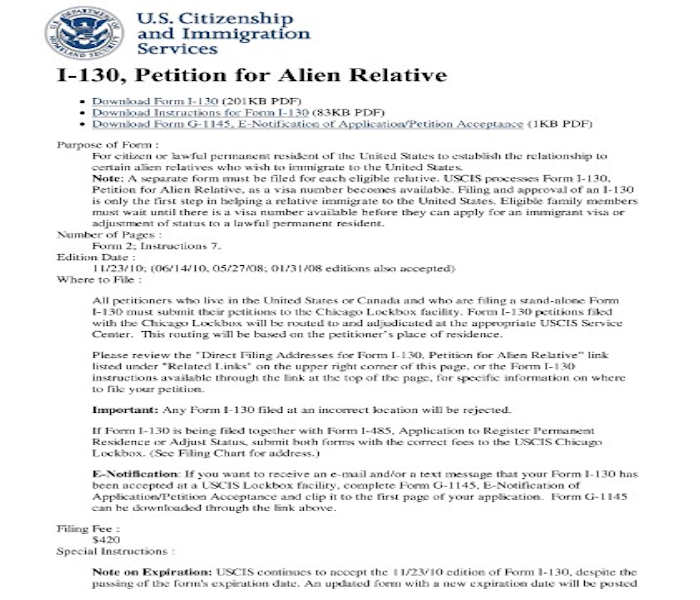If you find yourself in a situation where your I-130 petition has been revoked or denied, there may still be hope through the process of humanitarian reinstatement. This article serves as a comprehensive guide, offering step-by-step instructions, insights into eligibility criteria, and essential tips for requesting humanitarian reinstatement of your I-130 petition with the U.S. Citizenship and Immigration Services (USCIS).
Understanding Humanitarian Reinstatement
Humanitarian reinstatement is a provision that allows USCIS to reinstate a revoked or denied I-130 petition due to the petitioner’s death or other exceptional circumstances. It is typically used to preserve family-based immigration benefits for beneficiaries facing significant hardships.
Common Exceptional Circumstances
| Exceptional Circumstance | Description |
|---|---|
| Death of the Petitioner | When the sponsoring family member (petitioner) passes away. |
| Severe Medical Condition of the Beneficiary | If the beneficiary suffers from a severe medical condition that would result in extreme hardship if not allowed to immigrate. |
| Aging Out of Beneficiary | For beneficiaries who were under 21 years old when the petition was filed but have since turned 21, humanitarian reinstatement may be sought to prevent aging out. |
| Other Exceptional Cases | USCIS considers other unique and compelling circumstances on a case-by-case basis. |
Eligibility Criteria for Humanitarian Reinstatement
To be eligible for humanitarian reinstatement, certain conditions must be met:
Eligibility Criteria
- Demonstrate Qualifying Relationship: The beneficiary must establish that they had a qualifying relationship with the petitioner (spouse, child, etc.) at the time of the petitioner’s death or the exceptional circumstance.
- Extreme Hardship: You must demonstrate that not reinstating the I-130 petition would result in extreme hardship.
- Proper Filing: File the request for reinstatement within two years of the petitioner’s death or discovery of the exceptional circumstance.
The Process of Requesting Humanitarian Reinstatement
Requesting humanitarian reinstatement involves several steps:
Step-by-Step Process
- File Form I-824: Submit Form I-824, Application for Action on an Approved Application or Petition, along with the required filing fee. This form is used to request the USCIS to reinstate the I-130 petition.
- Include Supporting Documents: Attach relevant documents to demonstrate the qualifying relationship, the exceptional circumstance, and the extreme hardship that would result if the petition is not reinstated.
- Wait for USCIS Response: USCIS will review your request and supporting documents. You may be asked for additional evidence or information during this process.
- Approval or Denial: USCIS will notify you of the decision to approve or deny the request for humanitarian reinstatement.
Tips for a Successful Reinstatement Request
- Thorough Documentation: Ensure you provide comprehensive documentation to support your case.
- Timely Filing: File Form I-824 within the two-year window.
- Legal Counsel: Consider seeking legal assistance from an immigration attorney experienced in humanitarian reinstatement cases.
Conclusion
Requesting humanitarian reinstatement of an I-130 petition with USCIS is a complex process that requires careful attention to detail and adherence to eligibility criteria. If you believe you qualify for humanitarian reinstatement due to the petitioner’s death or another exceptional circumstance, it is crucial to follow the outlined steps, gather strong supporting documentation, and consider legal counsel for the best chance of success. This process offers a lifeline for beneficiaries facing significant hardships and is an important avenue for preserving family-based immigration benefits.









